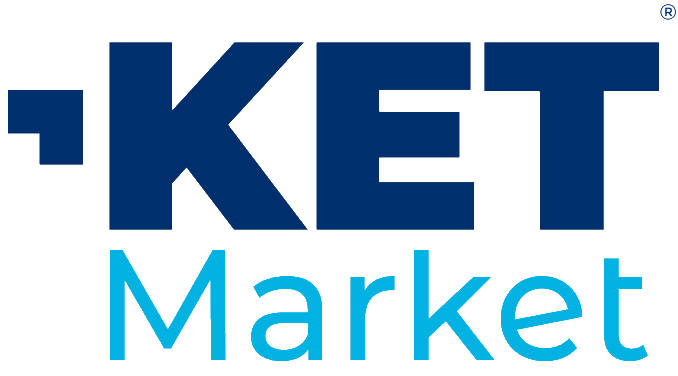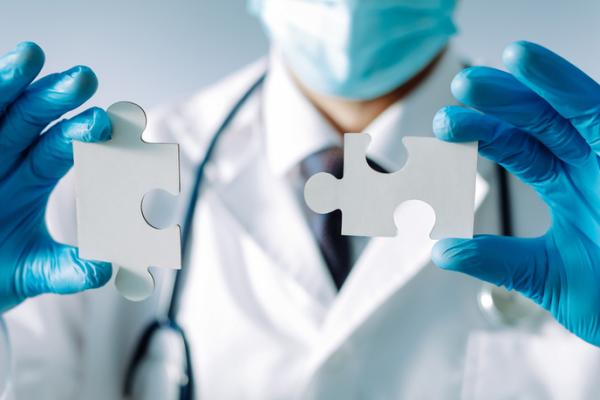Close to 300 million people around the world have a rare disease (RD) today, but there is good reason to hope that the root causes of genetic RD – most rare diseases are genetic – will eventually be discovered. And even though the majority of RDs have no approved treatments (less than 6% of RDs have), scientific strides have brought promising new therapeutic models. For instance, RNA-based therapies and viral vector-based gene therapies have been added to the arsenal.According to IRDiRC, the genetic causes of over 4,000 RDs have already been identified.A great comfort to those suffering from a disease is that it can at least be identified, says IRDiRC’s retiring Chair Dr Lucia Monaco. This rings particularly true for families of children suffering from RDs – as children are primarily afflicted. She described the medical journey travelled by the patient (and their families and doctors) as ‘diagnostic odysseys’.Enter theEuropean Commissionand theUS National Institutes of Health, which in 2011 together launched an initiative to unify fragmented RD research, cut research costs, bring experts together, and create what today is the world’s largest consortium in RD research, IRDiRC, with stunning results – helped along by major advances in genomics.Diagnosis within a year – IRDiRC’s promiseDr Lucia Monaco, retiring head of the International Rare Diseases Research Consortium (IRDiRC) and former head of the Research Impact and Strategic Analysis team at Fondazione Telethon © Lucia MonacoToday, the consortium is what Dr Monaco calls a collective intelligence’, counting among its ranks key organisations funding RD research, companies investing in RD research and umbrella patient advocacy groups from Asia, Africa, North America, South America, Europe and Australia.IRDiRC is perhaps best known for its inspiring commitment to ensure that each patient coming to medical attention with a suspected RD will be diagnosed and receive care and the available treatments within a year if their disease is known in the medical literature. Equally important, those suffering from a suspected RD but without a diagnosis within a year will be logged into a global diagnostic and research pipeline, allowing researchers to identify and match any RD in the future.Dr Monaco highlights how IRDiRC addressed the problem of the ‘diagnostic odyssey’ many people face, by setting up a task force that later led to the creation of a gamechanging informatics tool.‘Now, when the same genetic fingerprint and clinical manifestations belonging to different persons affected by a still unknown disease are stored in different databases around the world, we are able to match them and identify the disease for such extremely rare conditions,’ said Dr Monaco.‘We have named this match tool theMatchmaker Exchange,’ she explained. IRDiRC launched an international and open collaboration in 2013 in cooperation with the Global Alliance for Genomics and Health, resulting in a wide network of international participants for the Matchmaker Exchange. This tool has been instrumental in finding the genetic causes for patients with RD by providing evidence – from cases around the world – to identify the causative genes.Delivering 1,000 new treatmentsIRDiRC has also succeeded in meeting its second original goal – that of helping develop 200 new therapies for RDs within a decade. It then decided to become more ambitious.“We had initially set 200 new therapies as a goal for the decade 2010-2020, and we reached this deadline three years earlier, which then stimulated IRDiRC to set a new goal that by the end of the decade 2017-2027, our goal is to reach 1,000 new therapies.Dr Lucia Monaco, retiring head of IRDiRC‘We had initially set 200 new therapies as a goal for the decade 2010-2020,’ said Dr Monaco. ‘We reached this deadline three years earlier, which then stimulated IRDiRC to set a new goal to reach 1,000 new therapies by the end of the decade 2017-2027.’Concurrently, IRDiRC also adjusted its primary goal to reflect not just its commitment to diagnosing people with a known RD within one year of seeking medical attention, but also to ensuring they get access to treatment and care for the RD within the same time frame.A toolkit the world can useIRDiRC also created a working group that identified an original list of more than 200 known therapies that are considered essential to RDs. This aligns with the need and urgency to make any already-approved therapies accessible to patients living with RDs.Working with healthcare organisations and caregivers, IRDiRC drew up and published the RD list of essential treatments, based on the strength of scientific evidence and input by experts.‘Any healthcare system in any country in the world can use it as a reference when making their own decision[s] on making these therapies accessible to patients, in the frame of their political and economic contexts,’ commented Dr Monaco.Dr Monaco also singles out IRDiRC’s unique guidebook for orphan drug designation as one of the consortium’s crowning achievements, noting how drugs have so far been developed for a small number of rare diseases, leading to the need for orphan drugs as well as guidance in bringing them in for approval. ‘It’s an interactivetoolthat is accessible from our website, that has all the building blocks that have to be in place,’ she noted.Dr David Pearce, incoming head of the International Rare Diseases Research Consortium © David PearceAmong other initiatives over the last decade, IRDiRC also produceda key set of recommendationson clinical trial designs appropriate to small populations, a scenario often the case with RD research.What the future holdsDescribing the consortium as an ‘influencer’, Dr Pearce also likens it to a ‘sleeping giant’. He believes that in the future, IRDiRC’s work coupled with advances in genomics will significantly add to its diagnostic, therapeutic and communication toolbox – and with it, a better understanding of the value of RD research.“IRDiRC is an influencer, but also a sleeping giant.Dr David Pearce, incoming head of IRDiRC‘One term has come to light – precision medicine – during the 10 years [since IRDiRC was founded]. We have billions of letters [nucleotides] in our genome [that make up gene sequences] and that will define our health in many respects,’ Dr Pearce added, describing the value of genomics in new health treatments. ‘Of course, other things we will do will have a huge influence on our health as well. But precision medicine has really grown… in terms of understanding the changes in our DNA that cause cancer and how cancer cells develop and grow – it doesn’t get any more precise than an RD.’Dr Pearce, who is the the current president of Innovation, Research and World Clinics atSanford Health, is also an expert on Batten disease (a genetic disorder of the nervous system). He looks forward to increasing IRDiRC’s membership, by ‘proving the value of bringing people together,’ and is keen to expand geographically, bringing in more members from South America, Africa, and Asia.‘We need to make IRDiRC truly more global, because we need the different viewpoints and research,’ he explained. ‘Also, to truly understand those billions of letters [in the human genome], we need to have the diversity of the entire planet.’Dr Pearce aims to foster greater communication and even more partnerships for IRDiRC, but with an added focus: developing the consortium’s goal of measuring the impact on educating people on why it is important to develop RD diagnostics and therapies.‘I believe this organisation and this current membership have the ability to influence, and as we grow the membership, we will be able to influence more,’ he concluded.The scientific secretariat of IRDiRC was funded by the EU. If you liked this article, please consider sharing it on social media.The European Commission and IRDIRCThe International Rare Diseases Research Consortium (IRDiRC) was established in 2011 by the European Commission and the US National Institutes of Health to foster and coordinate international efforts towards accelerating medical breakthroughs for people living with rare diseases.Today, IRDiRC unites national and international governmental and non-profit funding bodies, companies (including pharmaceutical and biotech enterprises), umbrella patient advocacy organisations, and scientific researchers to promote international collaboration and advance rare diseases research worldwide.The vision: Enable all people living with a rare disease to receive an accurate diagnosis, care, and available therapy within one year of coming to medical attention.
This article was originally published in Horizon, the EU Research and Innovation magazine.
Add to favorites:
Share:
Listing Description
Video
Documents
No documents available.
Ask KETMarket to make a contact
Connect with the Listing Owner!
💬 Please log in now to askKETMarket to make a contact. Not a member yet? Sign up for free and start connecting today!
Video
Related Funding and Finance Opportunities
Unlock Exclusive Funding Opportunities!
🔑 Get instant access to tailored funding opportunities that perfectly match your needs. This powerful feature is exclusively available to our premium members—helping you save time, stay ahead of the competition, and secure the right funding faster.
Upgrade to Premium now and never miss an important opportunity again! Already a premium member? Log in here to explore your matches.
Related Innovation Offers
Discover Tailored Innovation Offers!
🚀 Gain access to technology solutions that match your specific needs and interests—carefully selected to support your innovation goals. These offers are exclusively available to our premium members, helping you identify relevant technologies faster and start the right conversations with potential partners.
Upgrade to Premium now and explore your personalized technology matches today! Already a premium member? Log in here to view your tailored offers.
Related Knowledgeable Resources
Discover More with Premium: Related Knowledge Resources
🔒 You’re missing out on expert-curated knowledge specifically matched to this topic. As a Premium member, you gain exclusive access to in-depth articles, guides, and insights that help you make smarter decisions, faster.
Whether you’re preparing a funding proposal, researching a new market, or just need reliable information—our Premium knowledge matches save you hours of research and point you directly to what matters.
Upgrade to Premium now and instantly unlock relevant knowledge tailored to your needs! Already a member? Log in here to view your personalized content.

